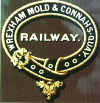Although I have modeled in S4 for many years, I have never asked a question here. So I may be in the wrong area.
I am trying to cut and shut Triang clerestory coaches. Are there any recommendations for a glue that works? I have tried Butanone and cyanoacrylaten without success. I am reluctant to use Araldite, which would probably work, because of the thickness of the joint which would result. Any suggestions?
glueing help
-
John Palmer
- Posts: 825
- Joined: Fri Jul 15, 2011 11:09 pm
Re: glueing help
I'm a bit surprised that you had no success with butanone. I did a major cut and shut of a Tri-ang Southern bogie utility van that must be of roughly the same vintage as your clerestories (introduced at the time of the Dean Single, yes?), and I had no problem welding the quarters together with solvent. The solvent I used may have been branded Mek Pak rather than butanone, which I believe are not necessarily the same. If butanone won't work, perhaps it would be worth a trial of Mek Pak or even acetone.
To get the quarters well united with each other I overlapped the joints with styrene; this may have added to the robustness of the joints, but, as I say, sections of the original Tri-ang plastic seemed to weld together quite satisfactorily without such reinforcement.
To get the quarters well united with each other I overlapped the joints with styrene; this may have added to the robustness of the joints, but, as I say, sections of the original Tri-ang plastic seemed to weld together quite satisfactorily without such reinforcement.
-
Philip Hall
- Posts: 1953
- Joined: Mon Aug 10, 2009 7:49 pm
Re: glueing help
I would not try Araldite, because it's unbelievably messy and takes a day to set. Epoxy Resins in general are not too good on plastic, although one of the best is Plastic Padding Super Steel. With epoxies I avoid the fast setting Araldite Rapid as it is no use at all, it's too brittle. Cyano (not brittle) ditto, although both these can be improved by a coating of Deluxe Materials Tricky Stick; wonderful stuff which I use to prime plastic before trying to stick it to other materials.
Like John, I would have thought that polystyrene cement or Mek-Pak should be suitable. I am a bit mystified that Butanone won't do because I usually use it as a more vicious adhesive for plastic. Of course, Mek-Pak has changed its formulation over the years amidst Health and Safety fears we are all going to drink or sniff the stuff.
Unfortunately for us many of the things we consider to be made of plastic are nothing of the sort. Many wagon chassis are made from bendy sorts of plastic, which Mek-Pak and the like won't touch. And models of a certain age, like the Triang clerestories (depending upon their age) could be moulded from something else that solvents don't like. Another thing is that many of the current breeds of mouldings change materials with succeeding batches. I have done work on the first batch of Hornby Maunsell carriages, cutting and widening the brakes and gluing back to the bogies with Mek-Pak. I did the same thing in the recent LSWR rebuilds and had to use Butanone (as I said before, much more vicious) and even then I used the Plastic Magic beforehand.
With all such cutting and joining, I would have a strip of styrene reinforcing the joint from behind.
Philip
Like John, I would have thought that polystyrene cement or Mek-Pak should be suitable. I am a bit mystified that Butanone won't do because I usually use it as a more vicious adhesive for plastic. Of course, Mek-Pak has changed its formulation over the years amidst Health and Safety fears we are all going to drink or sniff the stuff.
Unfortunately for us many of the things we consider to be made of plastic are nothing of the sort. Many wagon chassis are made from bendy sorts of plastic, which Mek-Pak and the like won't touch. And models of a certain age, like the Triang clerestories (depending upon their age) could be moulded from something else that solvents don't like. Another thing is that many of the current breeds of mouldings change materials with succeeding batches. I have done work on the first batch of Hornby Maunsell carriages, cutting and widening the brakes and gluing back to the bogies with Mek-Pak. I did the same thing in the recent LSWR rebuilds and had to use Butanone (as I said before, much more vicious) and even then I used the Plastic Magic beforehand.
With all such cutting and joining, I would have a strip of styrene reinforcing the joint from behind.
Philip
-
jon price

- Posts: 641
- Joined: Mon Jun 07, 2010 2:34 pm
Re: glueing help
I have succesfully cut and shut Triang clerestory bodies with off the shelf plastic cement (Revell I think) and they are firmly stuck together
Connah's Quay Workshop threads: viewforum.php?f=125
-
martin goodall
- Posts: 1425
- Joined: Fri Oct 02, 2009 6:20 pm
Re: glueing help
It's a long time ago now (about 40 years) that I did a cut-and-shut job on a Tri-ang clerestorey to produce a D15 38'6" Brake/3rd (actually about 6mm over length - it scaled out at 40', but allowed me to use the roof from a K's 40' full brake), but I am pretty sure I used Mek-pak. I can't think of any reason why Mek-pak shouldn't work on the impact moulded polystyrene from which these bodies were made.
-
jim s-w

- Posts: 2189
- Joined: Wed Jul 30, 2008 5:56 pm
Re: glueing help
Ive done a fair few cut and shuts (got a few more going on my workbench in a few days). I always use Humbrol liquid poly
HTH
Jim
HTH
Jim
-
dal-t
- Posts: 654
- Joined: Mon Jan 11, 2010 8:06 pm
Re: glueing help
I have occasionally encountered problems with Butanone drying too quickly in warm conditions, before it has had time to properly soften the material being joined, the solution to which was a second, more liberal application. But it isn't necessary to use Butanone when working with polystyrene, which I'm pretty certain the Tri-ang coaches are - and the beauty of polystyrene 'cement' is that it come in a range of thicknesses, from Tamiya's 'Thin' liquid to Humbrol's original-style 'tube' (yes, you can still get that, and yes it does still prefer to attach to fingers rather than the model). So you can choose as appropriate for the material, the general rule being 'the larger the joint and/or the harder the plastic, the thicker the cement'. So for hard plastic and long joints - such as the walls of buildings - I still consider the stuff in the tube to be the best. For major assemblies in smaller models I use either Revell (slightly thicker) or Humbrol (slightly thinner) from a 'precision applicator'. For small details it is either brush-on Humbrol or Tamiya. For the Tri-ang coaches I would probably have started with the Revell Contacta and moved on to Humbrol poly from a tube if things proved difficult.
What I don't understand is why there was a problem with the cyano, although it does depend on the variety used. Normal liquid or gel superglue will stick nearly all 'hard' plastics, providing the joint is clean, properly made, and held in contact through the initial drying time. Personally, I wouldn't try to just use cyano for a butt-joint on the sides, because you're still likely to end up with a weak joint, considering the total contact area is pretty small. To avoid that I would, as others have suggested, put an overlap piece of plasticard behind the joint. You could then use either thin poly or liquid cyano - both will 'wick' adequately between the layers. If the plastic is 'waxy' (not something I remember from Tri-ang, and I had a fair amount of their stock when I was younger) it will still fix with appropriate cyano, which would be just as effective on the plasticard strengthener.
What I don't understand is why there was a problem with the cyano, although it does depend on the variety used. Normal liquid or gel superglue will stick nearly all 'hard' plastics, providing the joint is clean, properly made, and held in contact through the initial drying time. Personally, I wouldn't try to just use cyano for a butt-joint on the sides, because you're still likely to end up with a weak joint, considering the total contact area is pretty small. To avoid that I would, as others have suggested, put an overlap piece of plasticard behind the joint. You could then use either thin poly or liquid cyano - both will 'wick' adequately between the layers. If the plastic is 'waxy' (not something I remember from Tri-ang, and I had a fair amount of their stock when I was younger) it will still fix with appropriate cyano, which would be just as effective on the plasticard strengthener.
David L-T
-
John Palmer
- Posts: 825
- Joined: Fri Jul 15, 2011 11:09 pm
Re: glueing help
If the materials to be jointed are solvent resistant or won't allow adhesive to adhere (!) then perhaps some lateral thinking is required. Possibly screwing the components together is a solution, or rivetting with rivets formed out of suitable rod or even sprue profiled to a circular cross-section. I used this technique successfully to form a joint between the styrene cam plate and 'soapy' plastic casing of the Como Drill gearboxes we use to drive signals and points on our Burnham layout. My sketch below may help to illustrate what I have in mind.
You do not have the required permissions to view the files attached to this post.
-
Enigma
- Posts: 536
- Joined: Tue Aug 13, 2013 2:49 pm
Re: glueing help
I'm sure that in the multitude of articles about transforming Triang Clerestories into other vehicles that, back in the distant past (ie - 1970's!), once abounded in the RM, MRC and MRN, Mekpak was the solvent adhesive used. In fact, it was possibly the only commercially available solvent available at that time?
Didn't Teddy Francis mix Triang and Ratio coaches to make some rather exotic GWR stock?
Didn't Teddy Francis mix Triang and Ratio coaches to make some rather exotic GWR stock?
-
Mike Garwood

- Posts: 618
- Joined: Sun Aug 03, 2008 4:51 pm
Re: glueing help
Plastic weld will do the job. Far more aggressive glue than Mek pak. Never had a problem gluing 'oily' plastics with this.
Mike
Mike
Return to “Tools and Techniques”
Who is online
Users browsing this forum: ClaudeBot and 0 guests